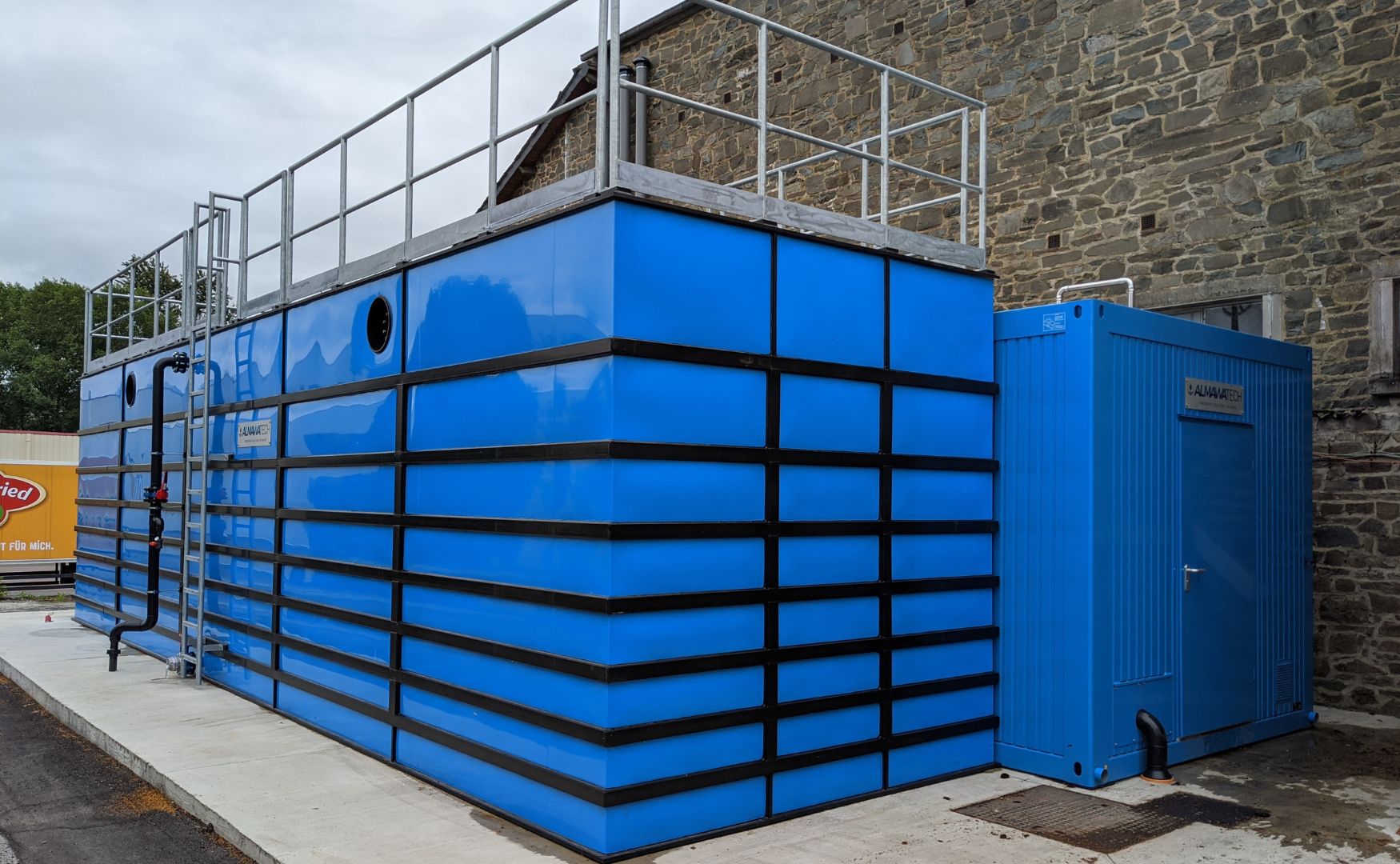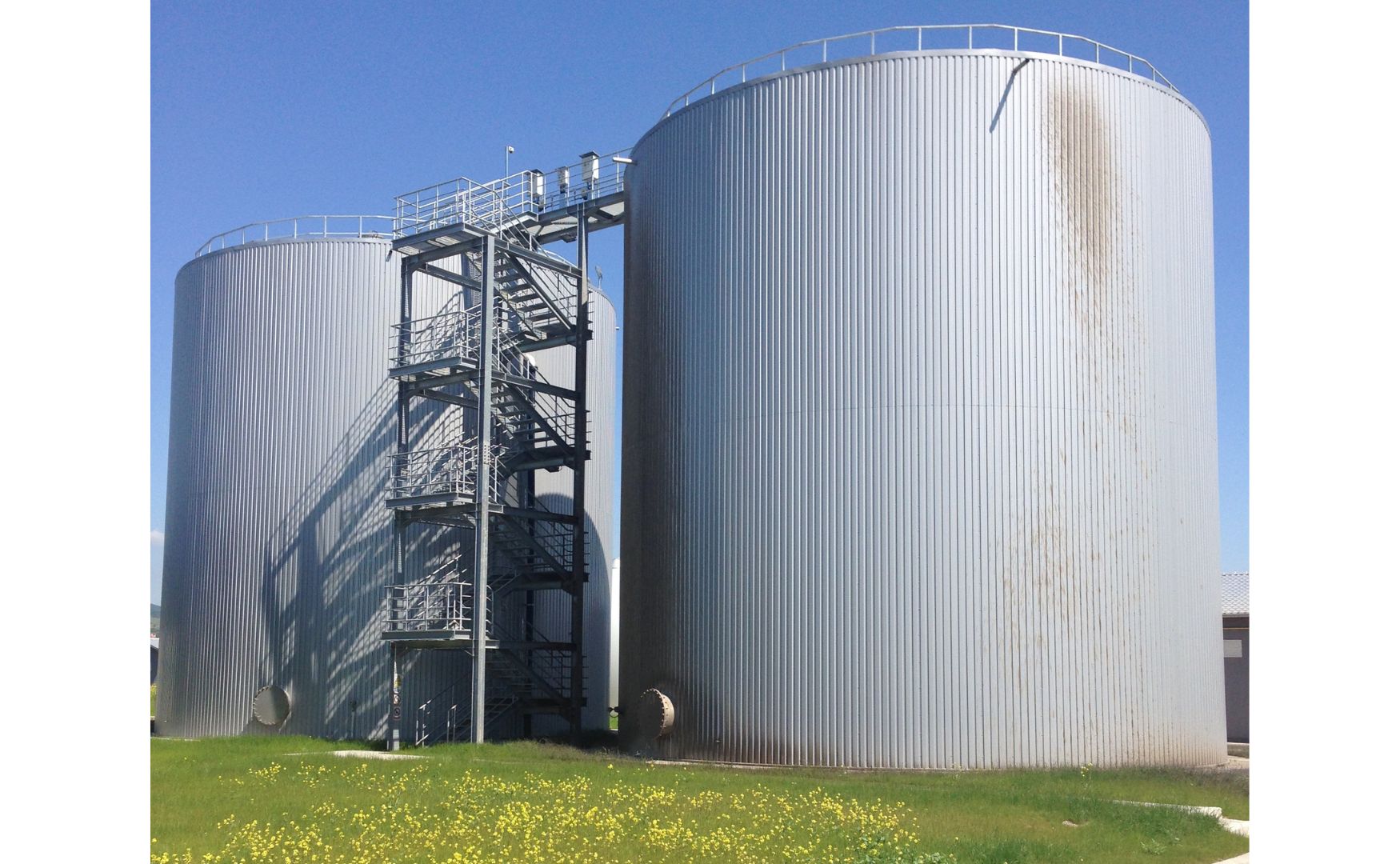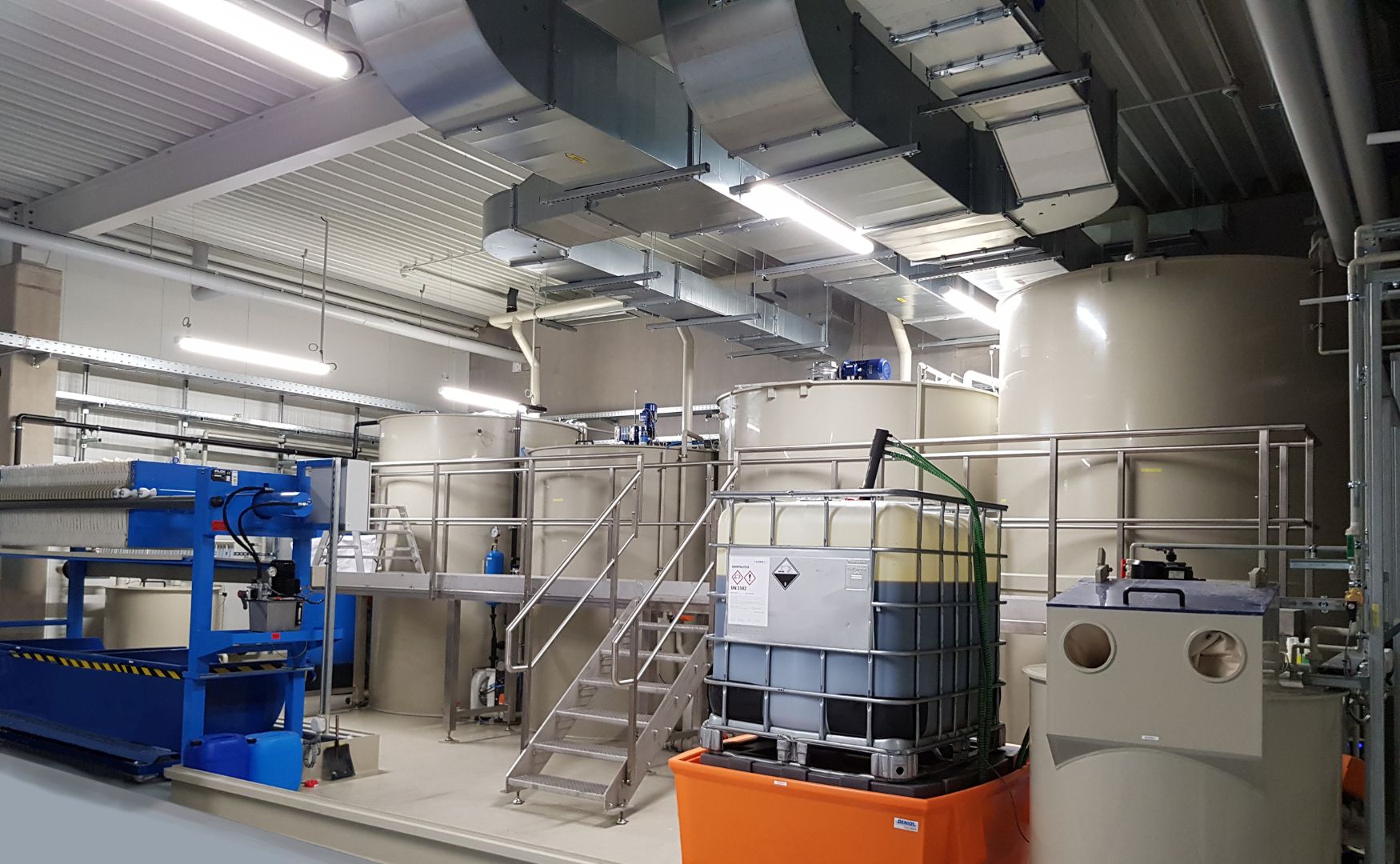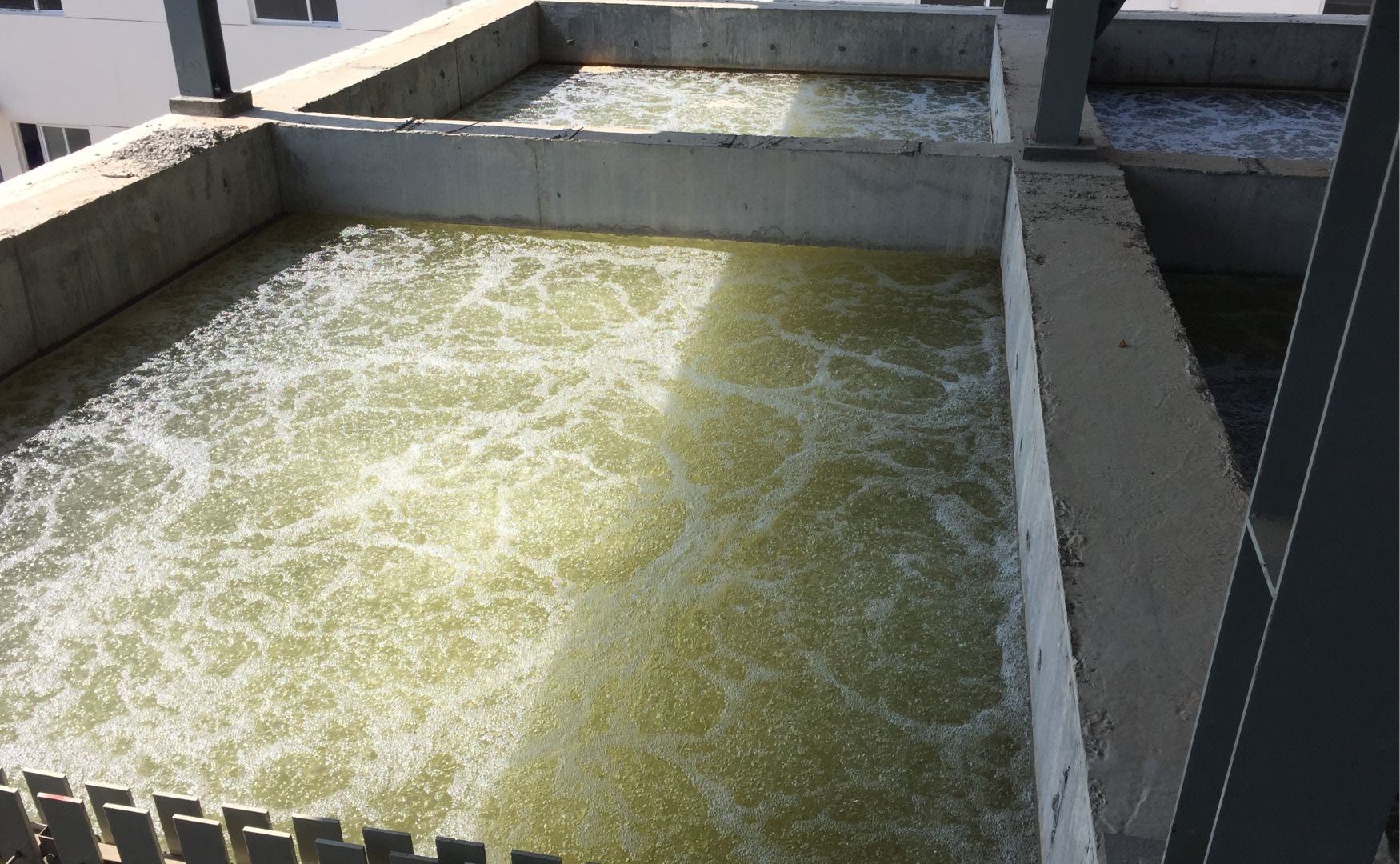Biological wastewater treatment is a key process for the purification of industrial and municipal wastewater. It uses the natural metabolic processes of microorganisms to remove organic compounds, nutrients and pollutants from wastewater. The biological processes used are based on the ability of bacteria, fungi and other microorganisms to break down organic substances and convert them into harmless end products such as carbon dioxide (CO₂), water (H₂O) and biomass. This takes place under aerobic or anaerobic conditions, depending on the type of wastewater to be treated and the process selected.
Table of contents
Technical basics
In industrial practice, biological wastewater treatment is carried out in various types of reactors that optimize biological degradation. The most common processes are
1. aerobic biological wastewater treatment
- In this process, microorganisms are used in an oxygen-rich environment to break down organic compounds into carbon dioxide, water and biomass. The most common processes include the activated sludge process, biofilm processes (e.g. trickling filters and fixed bed reactors) and membrane bioreactors (MBR).
Activated sludge process:
- In activated sludge tanks, the wastewater is mixed with active sludge containing a large number of microorganisms. The microorganisms break down the organic load while air or oxygen is blown in to ensure the required oxygen supply.

Photo: Aeration tank with denitrification and nitrification for wastewater from the food industry (process: ALMA BHU BIO)
membrane bioreactors (MBR):
- A combination of classic activated sludge technology and membrane filtration. These systems offer the advantage of very high efficiency in the separation of microorganisms and purified water, which is particularly important when reusing water (water recycling).

Photo: Compact membrane bioreactor in modular design(ALMA BIO MBR)
2. anaerobic biological wastewater treatment
- In anaerobic treatment, the microorganisms work in the absence of oxygen. This process is particularly suitable for wastewater with a high organic load, e.g. from the food industry or the chemical industry. The products of these processes include methane, carbon dioxide and ammonia. Anaerobic processes are energy-efficient as they do not require the introduction of oxygen and also generate biogas as an energy source.
- A frequently used process is the anaerobic sludge digester or the UASB reactor (Upflow Anaerobic Sludge Blanket), in which organic substances are broken down by a granulated anaerobic sludge.

Photo: anaerobic treatment in the ALMA BHU GMR biogas reactor
Relevance in practice
Biological wastewater treatment is a cost-effective and environmentally friendly process for removing organic matter, nutrients (such as nitrogen and phosphorus) and pollutants. It is used in a wide range of industries, including
- Food and beverage industry: This industry produces large quantities of organically contaminated wastewater that can be effectively treated using biological processes.
- Chemical industry: Biological treatment is used here to break down organic solvents, surfactants and other compounds.
- Pulp and paper industry: This industry produces wastewater with high concentrations of organic substances and nutrients that need to be biodegraded.
Processes and mechanisms
Organic degradation: The degradation of organic substances by microorganisms takes place through the uptake of the compounds as nutrients. Microorganisms convert complex organic compounds into simpler molecules, which are then broken down into carbon dioxide, water and biomass.
Nitrogen removal (nitrification and denitrification):
- Nitrification: Ammonium (NH₄⁺) contained in wastewater is first converted into nitrite (NO₂-) and then into nitrate (NO₃-) under aerobic conditions by nitrifying bacteria.
- Denitrification: Under anaerobic conditions, denitrifying bacteria reduce nitrate to gaseous nitrogen (N₂), which escapes into the atmosphere as a harmless gas.
Phosphorus elimination: The phosphorus content in wastewater can be reduced by biological phosphate elimination. Certain microorganisms store phosphorus in their cells as polyphosphates, which are then removed from the system as sludge.
Challenges and optimization
Although biological wastewater treatment offers many advantages, there are also challenges that need to be taken into account in industrial practice:
High concentrations of toxic substances: Some industrial wastewater contains toxic substances (e.g. heavy metals, phenols or chlorinated compounds) that inhibit the activity of microorganisms. In such cases, additional pre-treatment stages, such as chemical precipitation, oxidation (e.g. Fenton process) or membrane processes (e.g. reverse osmosis), must be used to remove or reduce the pollutants.
Precipitation and flocculation plants (CP plants):
- In some cases, in combination with biological wastewater treatment, chemical-physical systems (such as the ALMA CHEM MCW) are used to remove substances that are difficult to degrade or to improve the settling of solids.

Photo: CP plant for the removal of poorly biodegradable substances(ALMA CHEM MCW)
Biofouling in membrane systems:
- Biofouling can occur in biological treatment plants that work in combination with membrane processes (e.g. MBR or reverse osmosis). This is the accumulation of microorganisms and their metabolic products on the membrane, which reduces performance. Effective pre-treatment, such as the biologically activated filtration ALMA BioFil Compact or the ALMA BHU BAF, can help to remove residual organic matter and minimize biofouling.

Photo: Biologically activated filtration in concrete construction with clay beads as growth carrier and filter material(ALMA BHU BAF)
Conclusion
Biological wastewater treatment is a key technology for the purification of wastewater in industry. It utilizes the natural abilities of microorganisms to break down organic matter and nutrients, offering a cost-effective, sustainable and environmentally friendly solution. By combining various biological, chemical and physical processes, efficiency can be further increased and tailored to the specific requirements of the respective industry.
For further information on our products, please feel free to contact us at any time!








